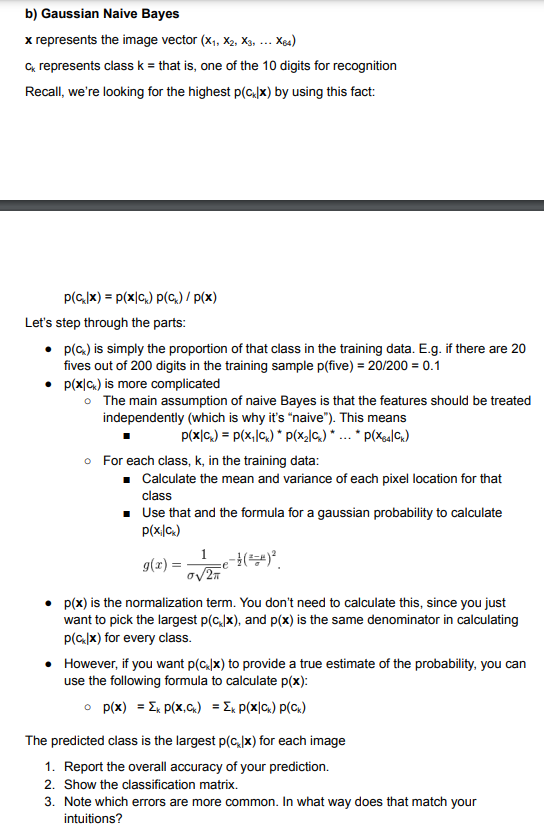Question
lab test : Need gaussian naive byes python code for digits dataset In this exercise, you are to implement only one of two possible classifiers
lab test : Need gaussian naive byes python code for digits dataset
In this exercise, you are to implement only one of two possible classifiers (your choice). Note, you are not to use modules which provide these functions - that would be too easy (no sklearn.naive_bayes, for example) but rather create them yourselves. Students who implement the logic for writing code for both the classifiers will be given bonus credit. The performance of your classifier implementation will be evaluated for the classifier functionality (whether you correctly implement kNN or Nave Bayes for the dataset) rather than efficiency. The data set to use is the digit recognition data set available from the sklearn module; the demonstration linked here should provide some guidance. You are expected to use Jupyter notebooks and Python on this assignment, but can ask for exceptions. Your goal is to take the first half of the data set to train your model, and the last half is used for prediction.

Step by Step Solution
There are 3 Steps involved in it
Step: 1

Get Instant Access to Expert-Tailored Solutions
See step-by-step solutions with expert insights and AI powered tools for academic success
Step: 2

Step: 3

Ace Your Homework with AI
Get the answers you need in no time with our AI-driven, step-by-step assistance
Get Started


